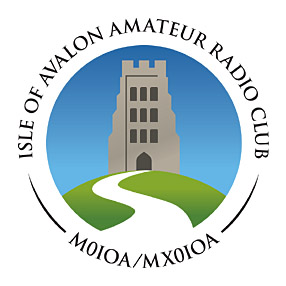More ISS tinkering - trying different approaches to ARISS-SSTV
the essentials
Like everything in amateur radio, you can put a lot of effort to get an optimal solution. However, for a quick easy-ish win:
High altitude pass - horizontal dipole perpendicular to ISS track
For high altitude passes >40° to nearly overhead, rig a horizontal dipole in the clear and set the ends roughly perpendicular to the track of the space station.

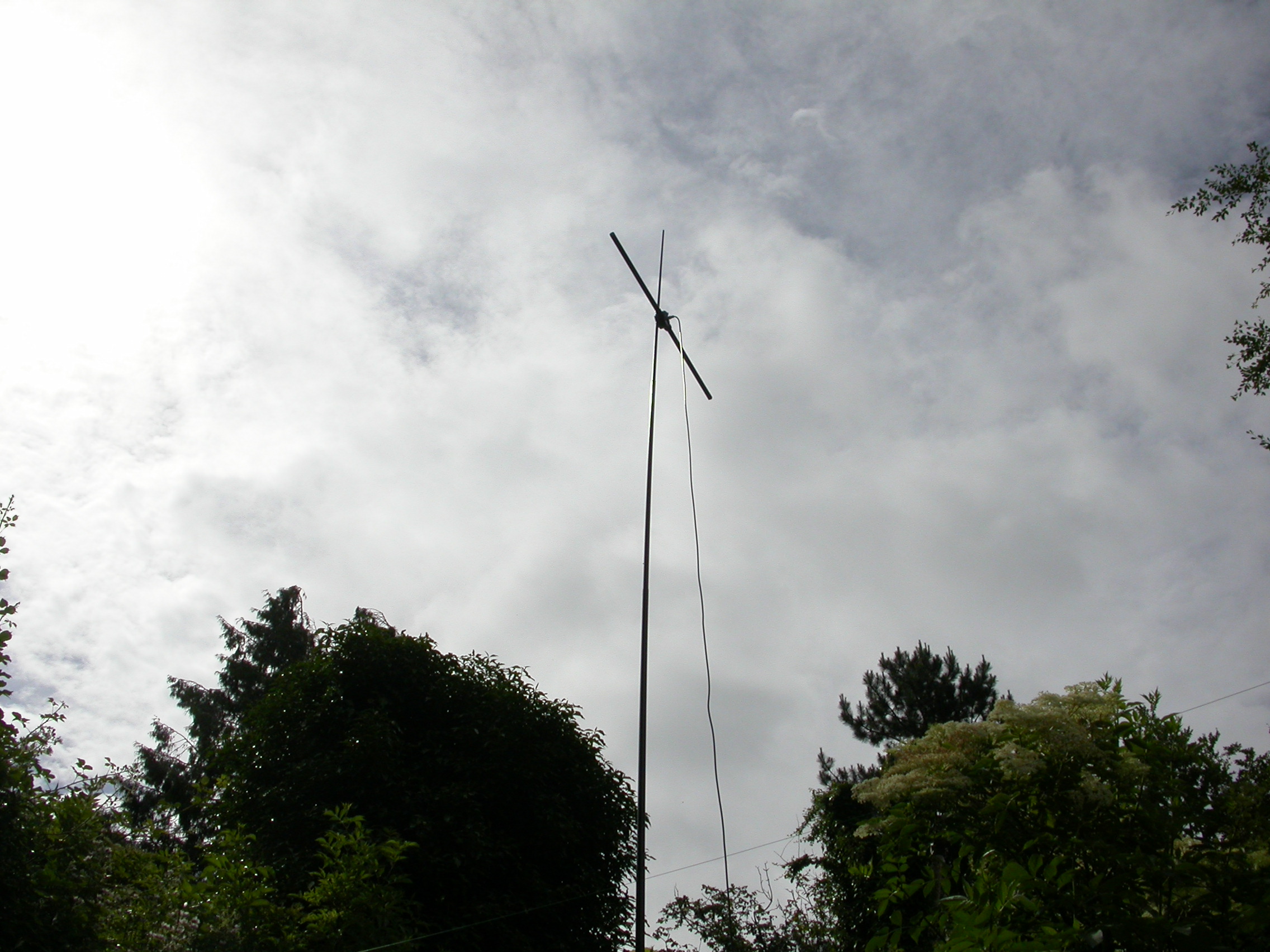
lower angle pass - use a vertical, simpler is better but a collinear can work well
For lower angles a collinear works well, but it is hit and miss as to whether the bird passes through some of the nulls in the vertical pattern. Shorter collinears may work better, but you’ll most likely use the one you have.
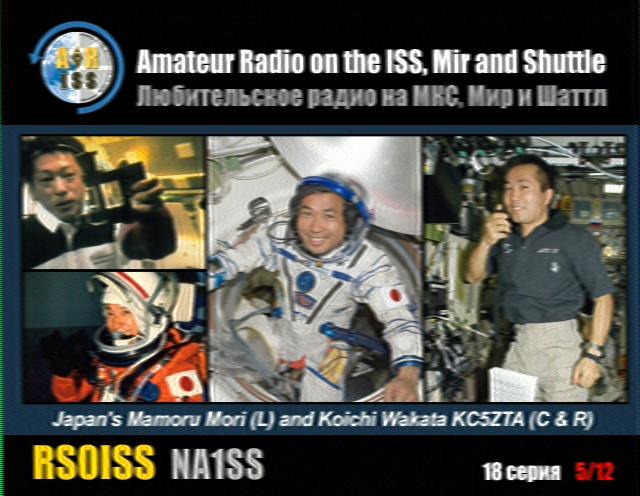
Everything went right for me on this pass over the Pyrenees about 30 degrees azimuth on the X500.
Handheld with long rubber duck - lay it on its side for high altitude passes
You can get serviceable though not terrific results with a handheld and a longish rubber duck on an overhead pass - lay it on its side.

the long read
I am trying to improve on yesterday’s results on the summer solstice, though looking at the images from today I seem to have had beginner’s luck on the Solstice!
Overhead pass
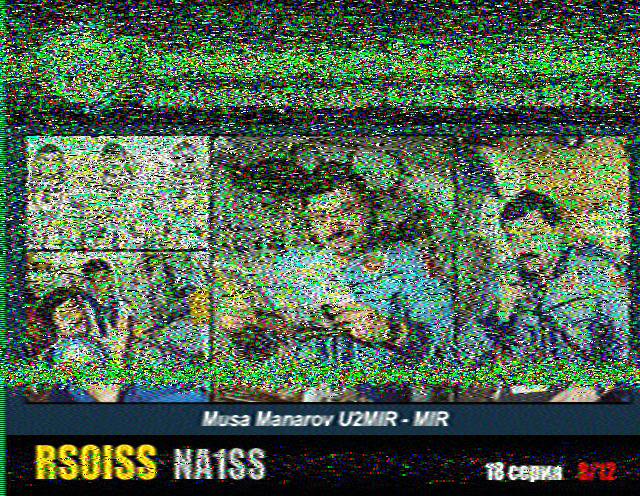
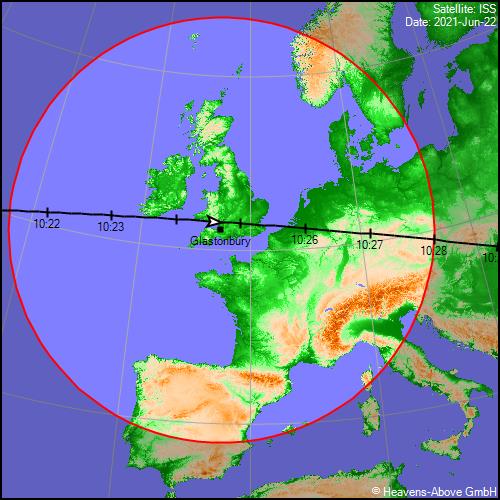
One would have thought this would be an easy win, but it is quite poor. My view is shielded to the North and East, but the ISS was almost directly overhead, which probably eliminates that as the problem. The ISS orbit doesn’t seem to go much above the southern UK in latitude, which is good for me as it won’t pass low on the horizon to the north
| Date: | 22 June 2021 |
| Orbit: | 417 x 422 km, 51.6° (Epoch: 21 June) |
| Event | Time | Altitude | Azimuth | Distance (km) | Brightness | Sun altitude |
|---|---|---|---|---|---|---|
| Rises | 10:19:13 | 0° | 272° (W) | 2,364 | -0.3 | 46.7° |
| Reaches altitude 10° | 10:21:19 | 10° | 274° (W) | 1,500 | -1.2 | 47.0° |
| Maximum altitude | 10:24:41 | 80° | 1° (N) | 430 | -2.9 | 47.5° |
| Drops below altitude 10° | 10:28:04 | 10° | 90° (E) | 1,498 | -0.1 | 48.0° |
| Sets | 10:30:09 | 0° | 91° (E) | 2,361 | 0.6 | 48.3° |
Moral of the story is a long high-gain collinear isn’t the tool for the job with high passes.
X30 with wider vertical pattern
Next I tried an X30 into the FT897, on the principle the broader vertical pattern might be of benefit
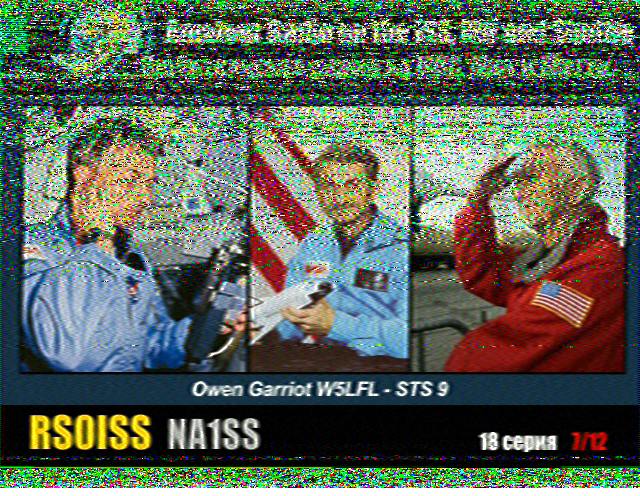
X500

Conclusion - maybe the X30 was a bit better on this pass, but there’s not a lot in it. Neither collinear excelled on this fairly high pass, which reached 41° altitude
RH771 rubber duck (oriented vertically)
For comparison, the result using a Kenwood THD7 handheld and a RH771 antenna - a longish rubber duck, oriented in the normal configuration with the antenna vertical.

The ISS track was this - I would have expected a stronger signal

Conclusion: stinks.
final pass for today gave me a chance to play with a few more variables - Black Cat Systems SST versus MMSSTV

NIDAY tried Black Cat SSTV and greatly preferred the results. He is using SSTV on single sideband. I tried Black Cat SSTV version 2.0.2 Jan 2021

I was not particularly taken with the result. The input signal is exactly the same, since it is a recording. Perhaps Black Cat is optimised for SSB signal paths rather than FM, but the results is softer and lower contrast than the MMSSTV. It sucks in comparison. This Youtube video showing how to use a SDR-Uno receiver with the ISS FM SSTV seems to indicate Black Cat wants the un-de-emphasised signal, which I can’t do.

low angle paths seem to work better for me
There’s a repeating pattern that my signals are better from the lower angle passes, typically where the ISS goes over Spain. I am not the only one to wonder if there is a better way. I am taken with the thinking along these lines:
A good trick in this case is to orient the dipole horizontally, and perpendicular to the track of the satellite’s pass. i.e. if the ISS is going to be coming over from the northwest to the southeast, point the ends of the antenna to the northeast and southwest. This places your nulls roughly on the northeast and southwest horizon, which are the points furthest from where the satellite will be at any point in the pass, so you should enjoy decent reception throughout.
All my experimentation so far has been with vertical polarisation, although I did try tilting the X30 to try and favour a higher angle towards the SW. I haven’t yet achieved an interference-free image, so I am not not sure I observe this to be true
the ISS is pretty darn loud compared to most amateur satellites… in most cases you can do everything wrong and still hear it fine, so don’t worry too hard.
trying SDRUno and horizontal polarisation
One of the wins from the research on the 22nd was the idea to place the dipole horizontal, crosswise to the track of the satellite.
improving handheld and rubber duck reception by placing rig horizontally
Extrapolating that to the handheld, I orientated it horizontally and gave this a go.

Now that’s not bad, IMO, compared to yesterday

and it’s delightfully simple to implement

I lifted it about 1.5m off the ground with a collection of sticks for a bonfire. This was a fairly close pass, with a peak altitude of 71°, so I was going to see a decent amount of the pass even from this height.
Trying a horizontal dipole
I rigged a horizontal dipole on a fishing pole
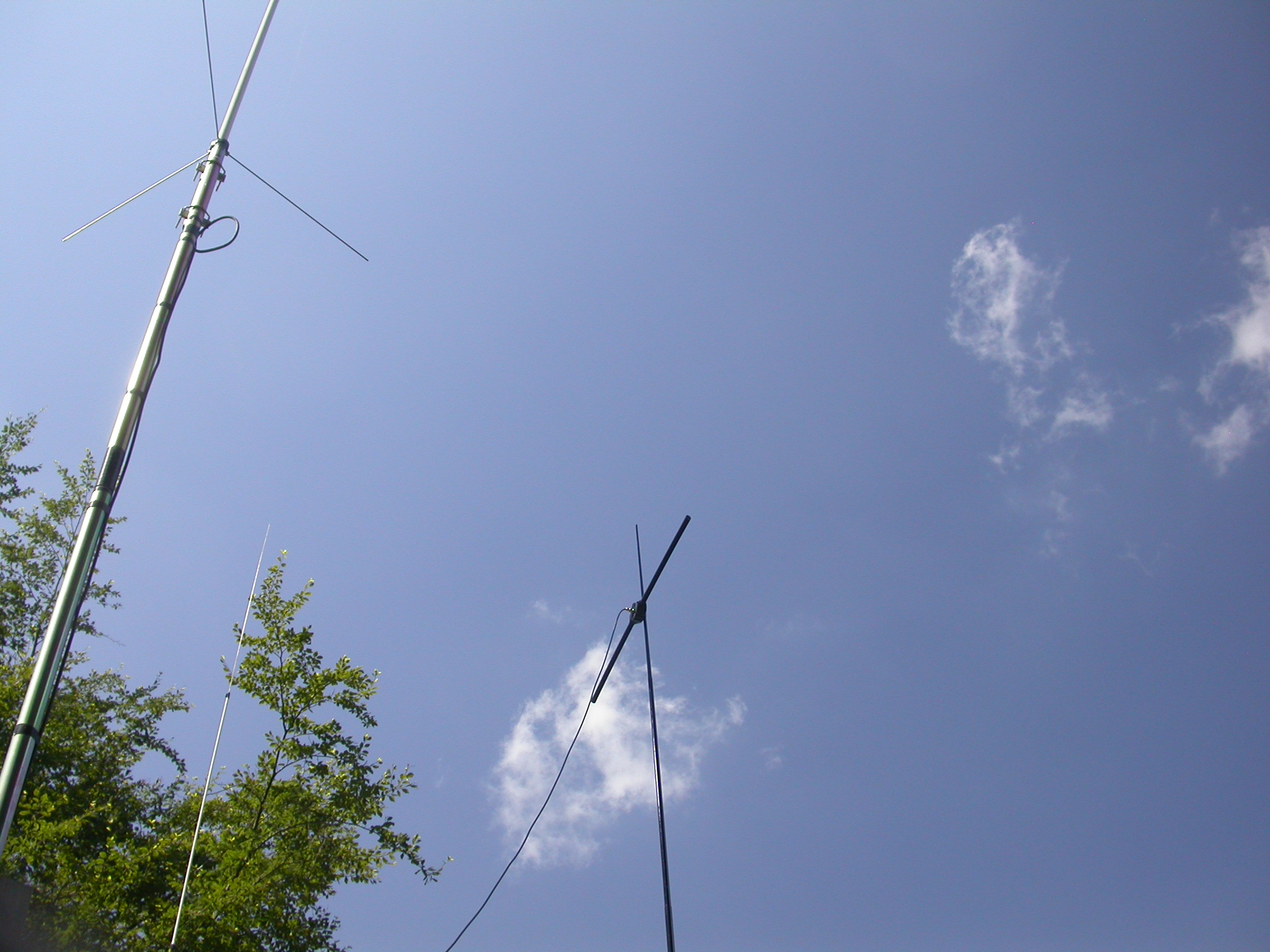
and ran a SDRPlay RSP-1. I could now adopt Black Cat Systems’ idea of turning off de-emphasis (it is in the extended menu of SDRUno). SDRUno lets you record the demodulated audio.
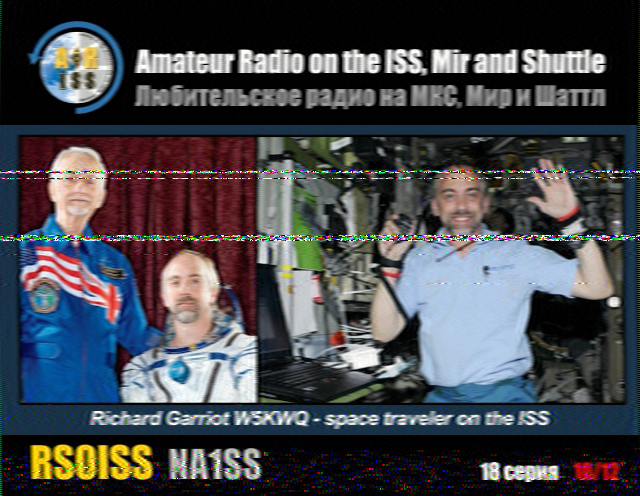
I would say I agree with Black Cat Systems, you get a little less patterning in even areas of colour. Of course this could also be that the SDR’s FM demodulation is more ideal than a hardware rig. I also observe that I have some probably local QRM just above 145.8 MHz. The SDR lets me define the passband more accurately to eliminate that, a 12kHz NBFM IF passband is good. I did try tuning to 145.799 and widening the passband a little but that didn’t really work well. I do see some doppler shift in frequency, but it’s not very large compared to 12kHz. (I wrote that before realising that Doppler is worse for higher altitude passes - see reducing QRM for why a 12kHz IF passband isn’t enough for high-altitude passes).
I took the same audio signal as above and fed it into Black Cat Systems SSTV decoder. This is the signal without de-emphasis which seemed to be recommended. The results still leave me cold.
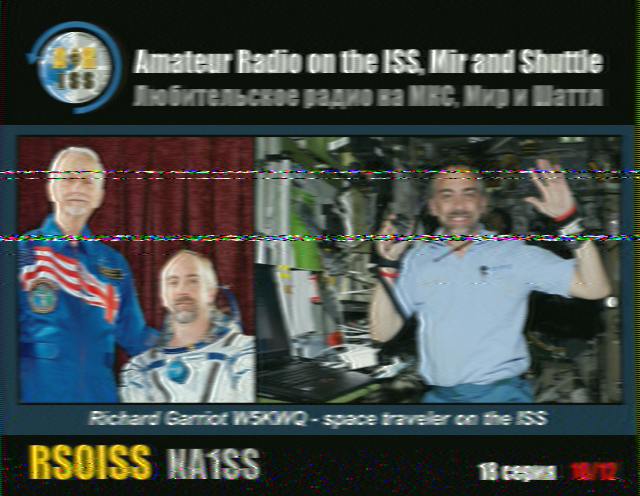
It’s a pity, because I really wanted to like the Black Cat Systems’ program. It has two features of value to me that MMSSTV doesn’t have. It can open an audio recording from a file, and the second feature is it can stream the audio from SDRUno using their plugin. But image quality is clearly not up to scratch in the way I am using it, and it’s not obvious what to do to fix that.
reducing QRM
I have been trying to eliminate the occasional interference noise bars. Looking at the Twitter feed for instance G7KNA is in this region, but though his kit is probably better there is some interference in the picture, and others in the thread also had some interference.
Running the SDR did show me on the waterfall that I had a lot of QRM just above 145.800, of a similar level to the wanted signal but about 6-7kHz up - I needed to reduce the FM IF passband to 12kHz on the SDR before I could get a steady hiss with no signal, else I observed a rasping sound. This is not ideal. Doppler shift is visually worse for overhead passes on the waterfall and can shift the apparent received frequency by 3.5kHz. To capture all sidebands as the satellite moves I need a IF passband of about 20kHz. If enough of the signal moves outside the IF passband you get what sounds like noise, which makes receiving the high-altitude signals harder, despite them being stronger in RF level.
I had heard this on the FT2900 and on the TH-D7 handheld, and to my chagrin I heard it louder as I approached the radio shack. I tracked this down eventually to a TP-Link MR-3220 wifi/3G router used to reach the Raspberry Pi units in the shack. I will switch this off for future attempts. It is notable that turning this off enabled me to get two entirely clean captures without noise bars. I was able to use a 20kHz IF passband on the RSP1. In theory if I could find out how to get SDRplay to AFC track the centre frequency I could reduce this.
Success at last
I got two interference-free pictures, one using the horizontal dipole on a nearly overhead pass, the other using the X500 collinear on a low 30° pass. On an overhead pass it is the luck of the draw if they run the SSTV signal in the main overhead segment. You will have more Doppler to contend with - the 20kHz IF bandwidth of the RSP-1 NBFM settings probably helped. If the signal drifts out of the passband you get noise.
So the principle seems to be have two antenna systems/rigs. Record all the signals and sort it out afterwards.
Further things to try.
I can’t make one in time of this ARISS-SSTV run, but a turnstile antenna may reduce noise bars due to cross-polarisation in overhead passes. I could improve my art by learning to track lower passes with a short Yagi.
